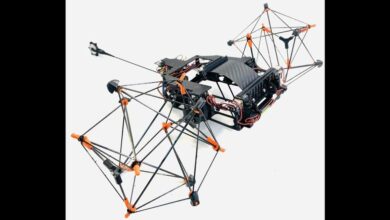Insomniacs Rejoice! This Headband Helps You Fall Asleep

Elemind, a five-year-old startup based in Cambridge, Mass., today unveiled a $349 wearable for neuromodulation, the company’s first product. According to cofounder and CEO Meredith Perry, the technology tracks the oscillation of brain waves using electroencephalography (EEG) sensors that detect the electrical activity of the brain and then influence those oscillations using bursts of sound delivered via bone conduction.
Elemind’s first application for this wearable aims to suppress alpha waves to help induce sleep. There are other wearables on the market that monitor brain waves, and, through biofeedback, encourage users to actively modify their alpha patterns. Elemind’s headband appears to be the first device to use sound to directly influence the brain waves of a passive user.
In a clinical trial, says Perry [no relation to author], 76 percent of subjects fell asleep more quickly. Those who did see a difference, averaged 48 percent less time to progress from awake to asleep. The results were similar to comparable trials of pharmaceutical sleep aids, Perry indicated.
“For me,” Perry said, “it cuts through my rumination, quiets my thinking. It’s like noise cancellation for the brain.”
I briefly tested Elemind’s headband in May. I found it comfortable, with a thick cushioned band that sits across the forehead connected to a stretchy elastic loop to keep it in place. In the band are multiple EEG electrodes, a processor, a three-axis accelerometer, a rechargeable lithium-polymer battery, and custom electronics that gather the brain’s electrical signals, estimate their phase, and generate pink noise through a bone conduction speaker. The whole thing weighs about 60 grams—about as much as a small kiwi fruit.
My test conditions were far from optimal for sleep: early afternoon, a fairly bright conference room, a beanbag chair as bed, and a vent blowing. And my test lasted just four minutes. I can say that I didn’t find the little bursts of “pink” noise (white noise without the higher frequencies) unpleasant. And since I often wear an eye mask, feeling fabric on my face wasn’t disturbing. It wasn’t the time or place to try for sound sleep, but I—and the others in the room—noted that after two minutes I was yawning like crazy.
How Elemind tweaks brain waves
What was going on in my brain? Briefly, different brain states are associated with different frequencies of waves. Someone who is relaxed with eyes closed but not asleep produces alpha waves at around 10 Hz. As they drift off to sleep, the alpha waves are supplanted by theta waves, at around 5 Hz. Eventually, the delta waves of deep sleep show up at around 1 Hz.
Ryan Neely, Elemind’s vice president of science and research, explains.
“As soon as you put the headband on,” he says, “the EEG system starts running. It uses straightforward signal processing with band pass filtering to isolate the activity in the 8 to 12 Hz frequency range—the alpha band.”
“Then,” Neely continued, “our algorithm looks at the filtered signal to identify the phase of each oscillation and determined when to generate bursts of pink noise.”
To help a user fall asleep more quickly [top], bursts of pink noise are timed to generate a brain response that is out-of-phase with alpha waves and so suppresses them. To enhance deep sleep [bottom], the pink noise is timed to generate a brain response in-phase with delta waves.Source: Elemind
These auditory stimuli, he explains, create ripples in the waves coming from the brain. Elemind’s system tries to align these ripples with a particular phase in the wave. Because there is a gap between the stimulus and the evoked response, Elemind tested its system on 21 people and calculated the average delay, taking that into account when determining when to trigger a sound.
To induce sleep, Elemind’s headband targets the trough in the alpha wave, which is the point at which the brain is most excitable, Neely says.
“You can think of the alpha rhythm as a gate for communication between different areas of the brain,” he says. “By interfering with that communication, that coordination between different brain areas, you can disrupt patterns like the ruminations that keep you awake.”
With these alpha waves suppressed, Neely says, the slower oscillations, like the theta waves of light sleep, take over.
Elemind doesn’t plan to stop here. The company plans to add an algorithm that addresses Delta waves, the low-frequency 0.5 to 2 Hz waves characteristic of deep sleep. Here, Elemind’s technology will attempt to amplify this pattern with the intent of improving sleep quality.
Is this safe? Yes, Neely says, because auditory stimulation is self-limiting. “Your brain waves have a natural space they can occupy,” he explained, “and this stimulation just moved it within that natural space, unlike deep brain stimulation, which can move the brain activity outside natural parameters.”
Going beyond sleep to sedation, memory, and mental health
Applications may eventually go beyond inducing and enhancing sleep. Researchers at the University of Washington and McGill University have completed a clinical study to determine if Elemind’s technology can be used to increase the pain threshold of subjects undergoing sedation; the results are being prepared for peer review.
Elemind is also working with a team involving researchers at McGill and the Leuven Brain Institute to determine if the technology can enhance memory consolidation in deep sleep and perhaps have some usefulness for people with mild cognitive impairment and other memory disorders.
Neely would love to see more applications investigated in the future.
“Inverse alpha stimulation [enhancing instead of suppressing the signal] could increase arousal,” he says. “That’s something I’d love to look into. And looking into mental health treatment would be interesting, because phase coupling between the different brain regions appears to be an important factor in depression and anxiety disorders.”
Perry, who previously founded wireless power startup UBeam, co-founded Elemind with four university professors with expertise in neuroscience, optogenetics, biomedical engineering, and artificial intelligence. The company has $12 million in funding to date and currently has 13 employees.
Preorders at $349 start today for beta units, Elemind expects to start general sales later this year. The company will offer customers an optional membership at $7 to $13 monthly that will allow cloud storage of sleep data and access to new apps as they are released.
IEEE Spectrum




